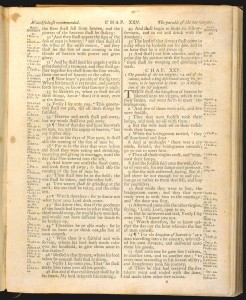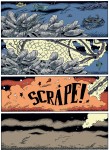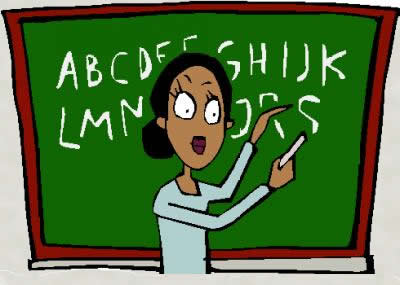Another way to improve your writing
Or at least make it more persuasive. I don’t think I have ever mentioned this technique, but I’ve known about it, and reading an article on the subject today reminded me that perhaps I should mention it. It doesn’t require knowledge of punctuation, how to spell, or use good grammar, either. Though you should certainly use all these skills. The technique is this:
Make your page look good.
The article I saw is a seven-page pdf titled The Debunking Handbook, by John Cook and Stephen Lewandowski, two Aussies who did some research on how to convince people that they were misinformed about something. This point, about the readability of the page, came out. It makes sense. People are less likely to read something if the page looks unreadable.
For example, a few years back I had a writing contract with a multinational bank. My first act was to reformat the documentation in their IT department. Immediately people decided the documentation was excellent, and I had changed hardly an actual word. Of course, I cleaned up the text too, eventually, but the change in appearance got my foot in the door so to speak.
For a counter-example, look at an old King James Bible. Two narrow columns fill each page from top to bottom. Narrow margins. Each verse starts a new line. No spacing between paragraphs; all dense text. Almost no white space. If it weren’t for the influence of Christianity itself, no one would read the book at all.
For technical documentation, I recommend the Midwestern style for page layout. San-serif headings, body text indented half an inch or so, in a font wider than Times New Roman, for goodness’ sake. There’s more to it than that, but you get a document with a relaxed, airy feel to it, room for notes, and you can skim for what’s there (both content and structure) because the headings are easy to see. I can’t show you an example from the bank because it’s all under a confidentially agreement, but if you’re really into it, email me and I can send you a couple-page sample of something else. If I get enough response, I’ll put up a series of posts about page layout. Then we can get back to grammar and punctuation.
Subscribe to this blog's RSS feed
A break of sorts
This post has nothing to do with grammar, and it’s only a little bit about writing, in that it’s an example of such.
I discovered a graphic novel being written by one Ben Towle, a fellow in one of my Google+ circles (Check out Google+ if you haven’t. Think FaceBook for people who look interesting to you. It’s full of interesting people, including, ahem, me.). The story is set in the Chesapeake Bay, in the (I hope fictional) town of Blood’s Haven, modeled, I think, on Cape May. It even mentions Annapolis, where I’m living right now. The art is pretty good, too, if you’re okay with wonderfully detailed artwork combined with four-fingered hands.
Here’s the first page, and the link to it.
Back to how to write well in the next post. Probably. The comic even has tai chi!
Four-letter words
Yes, this post is about bad language. Does profanity have a place in writing? Not in the kind of writing I advocate; just the same, profanity is an interesting subject.
Perhaps a small glossary is in order.
Profanity—terms that call to mind the purely earthly and secular.
Cursing—wishing someone ill.
Swearing—calling the deity to be a witness of the truth of a promise.
Minced oath—changing a bad word or phrase to avoid the stigma of using the actual expression.
Insult—accusing someone of possessing undesirable traits.
First, why do we call profanity “four-letter words”? Back in 1066 when the Norman French defeated the English, Anglo-Saxon got relegated to the barnyards, and pretty much lost all social standing. Perfectly ordinary (sometimes four-letter) words took on this low status, and we have inherited this social standing for many words of Anglo-Saxon origin. So we say “cow” when it’s on the hoof, and “beef” when it’s on the plate. You can supply your own examples for bodily functions, whose social status fell rather more sharply than terms for food.
In our culture, direct public references to private bodily functions using words of Anglo-Saxon origin have almost no place in polite conversation, even though the words themselves have benign origins. You might be interested to learn, for example, that the word for sexual intercourse has one of the longest and most distinguished etymologies of any word in our language. Look it up in your copy of Carl Darling Buck’s A Dictionary of Selected Synonyms in the Principal Indo-European Languages. This tome is a fascinating read, by the way, but that’s a topic for another post.
Even when the topic of your writing covers these private functions (a medical document, for example) you should use Greek- and Latin-based technical terms. That’s just how it is. Using profane four-letter words distracts your reader from the subject matter; and remember, your goal is to let your writing be transparent.
What about cursing? It carries the same social stigma as profanity. If you’re explaining something, you don’t need to curse. I have a problem wishing ill on anyone under any circumstances, but I can see how it might fit into some fiction and polemical writing.
And swearing? (Which of the Ten Suggestions Commandments is it?) “Thou shalt not take the name of the Lord thy God in vain.” Vain means “of little value; temporary.” God says He doesn’t want to be called to witness anything trivial. I think the admonition in the New Testament that “Let your yea be yea and your nay be nay” is reasonable. Whether you believe in God or not, you don’t need to emphasize what you say by reference to deity. Just say what you mean; always tell the truth. Period.
What about saying “darn” or “sacré bleu” instead of “damn” or “by the devil”? The intent is the same as using the “official” bad word; just as undesirable, in my opinion. Be creative! Say what you mean with realistic or clever unconventional words. “I wish you better understood the value of silence.” “You really missed a good opportunity to not say anything, didn’t you?” “I wish your behavior weren’t so reprehensible.” “I certainly hope that doesn’t happen again.” “It wasn’t a year one would look back on with fondness, was it?”
Finally, insults. Insults are perhaps the most benign type of bad language because they lend themselves to creativity. Shakspeare used some wonderful insults in his plays. Remember the old westerns on afternoon TV in the 50s? “Why you mangy lily-livered polecat! I oughta slit yer gizzle.” Actual bad language was forbidden back then, so some of the language got pretty colorful. Nonetheless, insults are ad hominem arguments, fallacious. Stand above that sort of thing.
Enough! I need to go take a shower.
All these proscribed words are bad mainly for cultural reasons. This negative emotional effect has one benefit, however, in some kinds of speech therapy. Watch the movie The King’s Speech and you’ll see what I mean.
What if you want to express the emotion of disappointment, frustration, surprise, or disapproval? If you can’t do these without resorting to profanity, here’s a little help. I recently ran into a word for that purpose that seems to have absolutely no scatological or other culturally unpleasant connotation. I ran into it in a Google error message: Oh Snap!
Even though I digress occasionally, the kind of writing I expose you to in these humble pages is expository writing; writing that conveys information with as few distractions as possible. Profanity, cursing, swearing, and insults cannot help you express yourself plainly. Save those things for trashy novels and old westerns.
For vocabulary that I never use, this has been a long post. Eight hundred eleven words.
Description or prescription?
Two schools of thought swim in the seas of linguistics. I call then the describers and the prescribers.
Describers say “This is how people use language.” They make no value judgements about language, and (IMO) consider themselves to be scientists.
Prescribers say “This is how language ought to be used.” Their premise is that if you don’t follow the rules, you will not be understood. I think they consider themselves to be communicators and teachers.
If you follow this site with any regularity, you know that a lot of the material here is prescriptive. Well, I’m a communicator. You need some rules to avoid ambiguity. But there’s a place for the purely descriptive, too, and debates between the two schools are mostly unnecessary; and they tend to concentrate in the boundary where change in language affects the rules. I think the describers tell the prescribers where they will be in the future, and the prescribers hate having to give in to the describers all the time.
I said all that to give you a link to a wonderful describer site. Check it out. It’s called Wordnik, and it’s a huge purely descriptive database (dictionary) of words as they are used now on the internet. No comments about rightness or wrongness. You can look for my own neologism, pretentiousism. I don’t think you’ll find it. Yet.
In which I bemoan the state of editing in…
…The New York Times, of all places. This newspaper, whatever you say about its politics, used to be the standard of good and correct writing to which any writer of non-fiction could aspire. Now I must say Beware of imitating how the NYT is written.
I’m in the middle of a photo article that reviews 2011 with 365 photographs. It’s an interesting article, and here’s the link: http://lightbox.time.com/2011/12/31/lightbox-365-a-year-in-photographs.
Photo 57, dated February 26 has a nice NASA photo of the ISS and the space shuttle with the earth in the background. “Backdrop,” even when used as a verb, is one word, folks.
“In this handout image provided by NASA, back dropped by a blue and white part of Earth, space shuttle Discovery approaches the International Space Station during STS-133 rendezvous and docking operations in Space.”
Photo 131, for May 11, has, and I quote, shuddering,
“A young Afghan boy who was shot in the stomach lays on a stretcher as he is taken to hospital in a medevac helicopter in the volatile Helmand Province of southern Afghanistan.”
I’m not trivializing the human tragedy here by mentioning bad grammar. Reporters and editors doing sloppy work do the trivializing. I discussed this verb a while back, here and here. The NYT should know better. (Full disclosure: they got the verb right in the Sept 13 photo.)
Photo 191, dated July 10, has this monument to carelessness:
A female passerby adjust her hair using the glass in the front door of the temporary residence of Dominique Strauss-Kahn and Anne Sinclair in the Tribeca neighborhood of New York City.
Third person singular present tense of “adjust” is “adjusts.” But you knew that.
Photo 221, dated August 9:
A malnourished sick with TB is being washed by his mother in Banadir hospital.
A malnourished what?
The Sept 14 photo caption has “a police” where they mean “a policeman.” The Sept 20 caption says the people in the picture have their heads bowed in prayer. They are standing, heads up, with their hands over their chests in the posture customarily taken when pledging allegiance.
Come on, you professionals at the NYT. Read my previous post.
To end on a cheerier note, here’s a NASA photo similar to the one in the NYT article.







